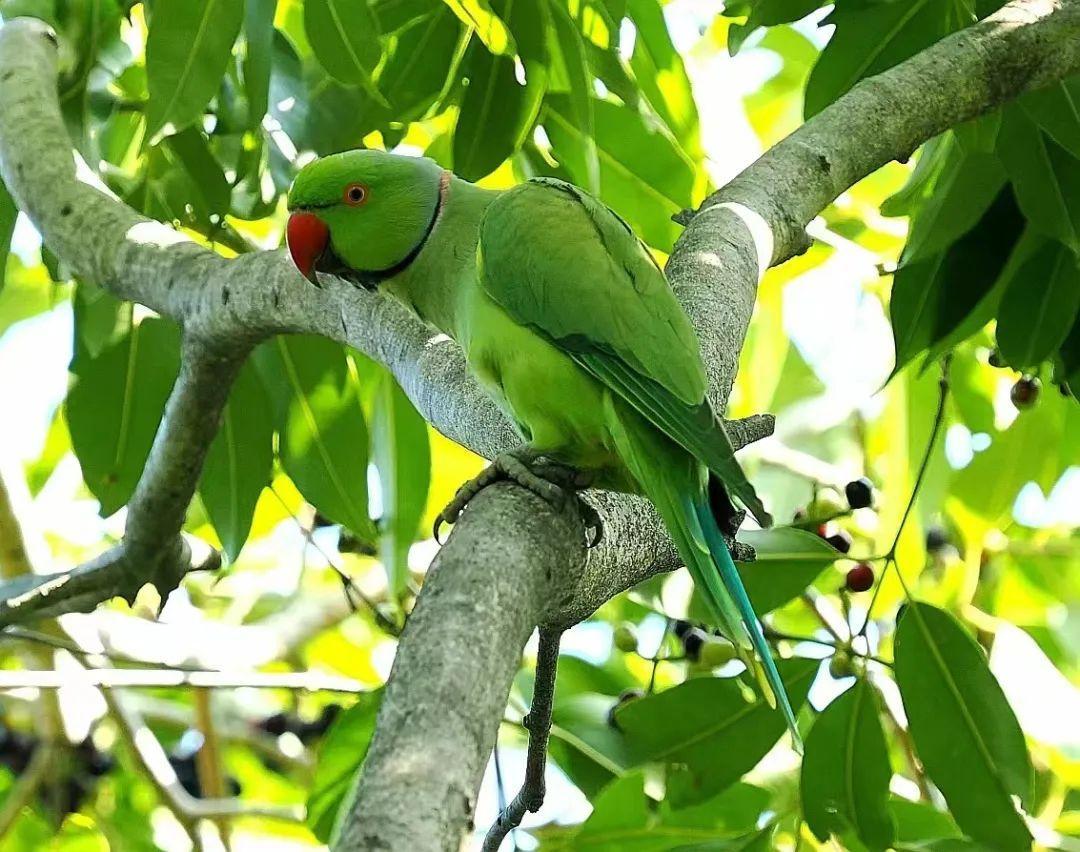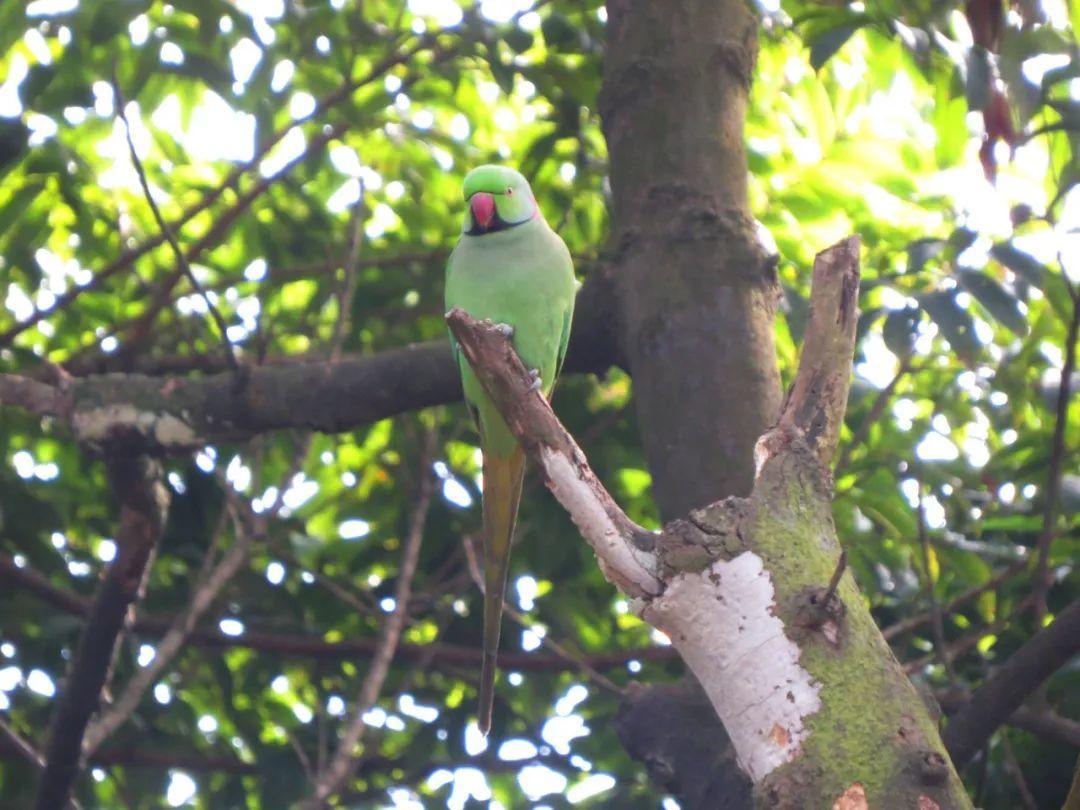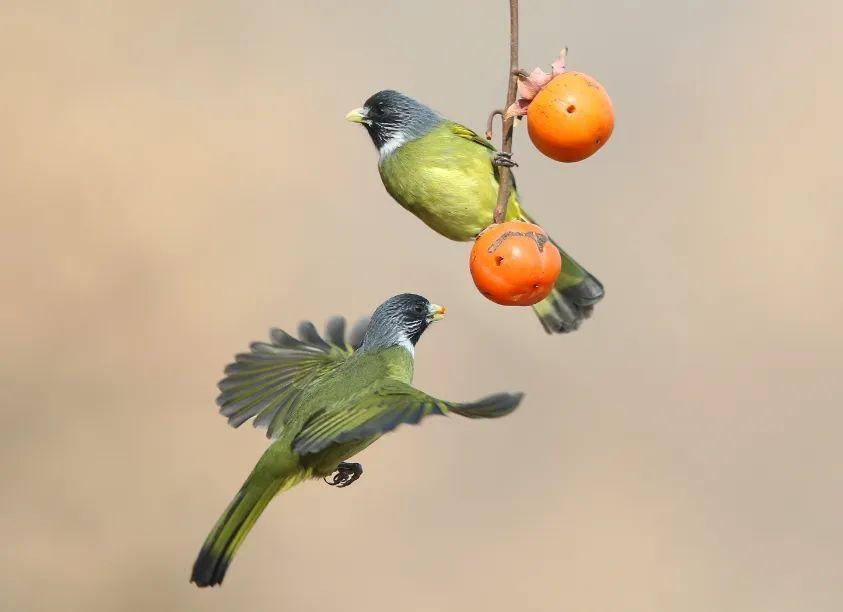
After years of ecological protection and restoration, Haizhu Wetland now features clear waters and abundant birds with more and more rare wild birds camping here. Recently, researchers discovered two new bird species—the rose-ringed parakeet and the collared finchbill. This brings the total bird species recorded at Haizhu Wetland to 200. The rose-ringed parakeet is notably beautiful and has the intelligence level of a 4-year-old human.

The rose-ringed parakeet often tries to mimic human sounds in its environment and can learn vocabulary by listening to music. It is listed as a second-level protected species in the List of National Key Protected Wild Animals. Historically, its distribution was broad, living in tropical and subtropical regions, with Guangzhou being the northernmost location.
The rose-ringed parakeet found in South China was introduced from outside around 1900 and gradually established a sizable wild population. It was once widely distributed in the south of the Pearl River in Guangdong, and was commonly seen flying over the Pearl River Delta. However, there have been no records in the wild in Guangzhou since 1980.

The rich habitat of Duoji fruit forests in Haizhu Wetland, with its diverse resources, provides ample food and shelter for the rose-ringed parakeet. Initially, 20 parakeets were reintroduced to the wild, and now a stable population of these parakeets can be observed in the wetland.
The collared finchbill typically inhabits forests and bamboo groves but can also be found near farmland and villages. Its calls are clear and melodious, and the bird is most active during the early morning and dusk. The breeding season for them usually occurs in spring. They build nests in trees and lay 2 to 4 eggs, which are incubated by the female.

As the largest and most well-preserved ecological core among the world's major urban centers, Haizhu Wetland boasts exceptional resources in ecology, research, culture, and location. Over time, its ecological value has become increasingly apparent, including its roles in environmental protection, scientific research, education, and recreation. More residents and visitors are enjoying its green benefits. The wetland's efforts to reintroduce rare bird species are effectively restoring local wildlife diversity in Guangzhou, enhancing ecosystem stability, and providing valuable experience and techniques for the recovery of other native wildlife.
Source :Lingnan on the Cloud
野外消失超40年再度回归!广州海珠湿地又“上新”
经过多年来的生态保护修复,海珠湿地水清岸绿、水鸟翩跹,越来越多的珍稀野生鸟类在这里安营扎寨。近日,科研监测人员发现了两种新鸟类——红领绿鹦鹉和领雀嘴鹎。至此,海珠湿地鸟类记录增至200种!其中的红领绿鹦鹉是非常漂亮的一种鸟,拥有4岁人类的智商。
据了解,红领绿鹦鹉经常试图在周围环境中模仿人类的声音,还能通过听音乐来学习词汇。红领绿鹦鹉被列入中国《国家重点保护野生动物名录》二级,历史分布范围较广,它们生活在热带和南亚热带地区,广州是它生活最北的位置。
华南地区分布的红领绿鹦鹉是大约在1900年时由外地引入,逐渐在野外形成了具有一定规模的野生种群,曾广泛分布于广东珠江以南区域,在珠江三角洲的上空随处可见。广州市自1980年后一直未有红领绿鹦鹉的野外记录。
海珠湿地丰富的垛基果林生态资源能为红领绿鹦鹉提供充足的食物来源和栖息环境。重回野外的红领绿鹦鹉最初引进了20只,现在,海珠湿地已经可以观测到形成稳定种群的红领绿鹦鹉。
领雀嘴鹎通常栖息在森林和竹林中,有时也会出现在农田和村庄附近。它们的叫声清脆悦耳,常常在清晨和黄昏时分最为活跃。领雀嘴鹎的繁殖季节一般在春季,它们会在树上筑巢,并产下2到4枚蛋,由雌鸟孵化。
作为世界超大城市中心规模最大、保存最完整的生态绿核,海珠湿地在生态、科研、人文、区位等领域具有得天独厚的资源禀赋。长期以来,海珠湿地的生态保护、科学研究、科普教育、休闲游憩等生态价值日益显现,越来越多的市民游客可以享受到家门口的绿色生态福祉。海珠湿地珍稀鸟类接连“上新”,有效恢复广州的本土野生动物多样性,提升生态系统稳定性,为后续其他本土野生动物的恢复积累相关技术和宝贵经验。
来源 |中国广州发布
译 | 林佳岱
英文审校 | 王枥焓
-
Centuries-old Guangdong herbal tea brand 'Xu Qixiu' wins over young health enthusiasts on Douyin
2024-08-24 20:26:14 -
The "Land Aircraft Carrier" makes its global debut in Zhuahai's Doumen District
2024-08-24 20:26:14 -
The "Guangzhou Standard" for arbitration secretaries to be officially released at the end of August
2024-08-24 20:26:13 -
Canton Tower Plaza passes inspection: a new landmark in Guangzhou
2024-08-23 22:13:48






